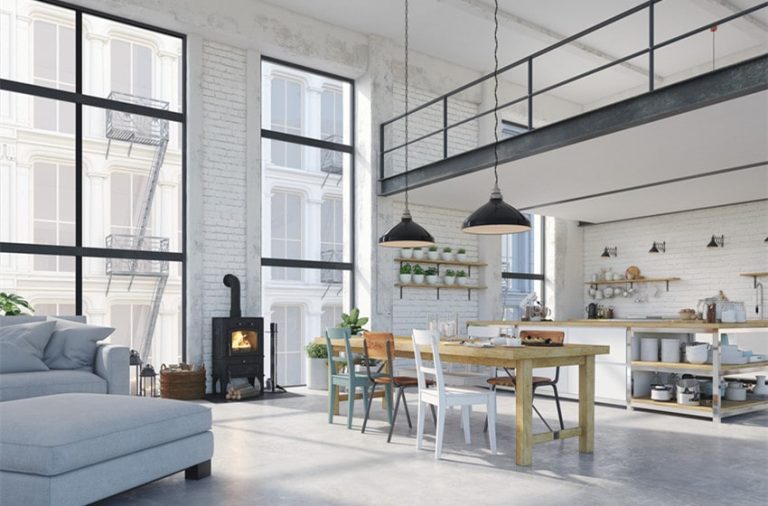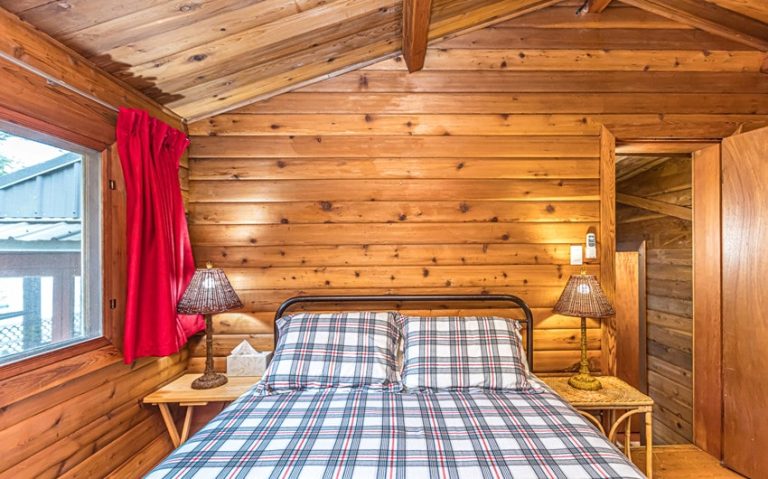In today’s world, the emphasis on sustainable living is more critical than ever. With the increasing awareness of environmental issues and the urgent need to reduce our ecological footprint, more homeowners, property developers, and business owners are seeking ways to create eco-friendly spaces. One effective method to achieve this is by incorporating reclaimed wood furniture into interior designs. This article explores the numerous benefits of reclaimed wood furniture and its significant contribution to sustainable living.
The Growing Demand for Eco-Friendly Homes
As society becomes more environmentally conscious, the demand for eco-friendly homes is on the rise. Consumers are looking for sustainable materials and practices that reduce waste and promote a healthier planet. Reclaimed wood furniture fits seamlessly into this trend, offering a sustainable alternative to conventional furniture while providing aesthetic and functional advantages.
Overview of Reclaimed Wood Furniture
Reclaimed wood furniture is crafted from wood that has been previously used in buildings, barns, warehouses, and other structures. This wood is salvaged, treated, and repurposed to create beautiful, unique furniture pieces. The process not only preserves the natural beauty and integrity of the wood but also supports environmental sustainability by reducing the need for new timber.
Understanding Reclaimed Wood Furniture
What is Reclaimed Wood?
Reclaimed wood is timber that has been rescued from old structures and given a new lease on life. Unlike virgin wood, which is freshly harvested, reclaimed wood has a history and character that adds depth and uniqueness to each piece of furniture. The distinct patina, knots, and grains in reclaimed wood tell a story, making each item a one-of-a-kind masterpiece.
Sources of Reclaimed Wood
Common sources of reclaimed wood include old barns, factories, warehouses, and even retired ships. These sources provide high-quality timber that has stood the test of time, often exhibiting superior strength and durability compared to new wood. The wood’s aged nature means it has already undergone expansion and contraction, reducing the risk of future warping.
The Process of Creating Reclaimed Wood Furniture
The journey from salvaged timber to exquisite furniture involves several meticulous steps:
- Salvage and Inspection: Identifying and retrieving suitable wood from old structures. This involves careful removal to ensure the wood is preserved in the best condition possible.
- Cleaning and Treatment: Removing nails, dirt, and other impurities, followed by treating the wood to prevent pests and decay. This process ensures the wood is safe and clean for crafting into furniture.
- Crafting: Skilled artisans design and construct furniture, highlighting the wood’s natural beauty and character. This involves precision cutting, sanding, and finishing to produce high-quality, durable furniture pieces.
Environmental Benefits of Reclaimed Wood Furniture
Reducing Deforestation
One of the primary environmental benefits of using reclaimed wood furniture is the significant reduction in deforestation. By repurposing wood that has already been harvested, we decrease the demand for new timber.
This practice helps preserve forests, which are vital for maintaining biodiversity, regulating climate, and supporting numerous ecosystems. Deforestation is responsible for a substantial portion of global greenhouse gas emissions, making the use of reclaimed wood a crucial step in combating climate change.
Minimising Waste and Landfill Use
Reclaimed wood furniture also contributes to waste reduction by repurposing materials that would otherwise end up in landfills. Construction and demolition waste account for a large percentage of landfill content. By salvaging wood from old structures, we divert waste from landfills, reducing environmental pollution and conserving valuable landfill space. Reusing materials is one of the most effective strategies for waste management.
Lowering Carbon Footprint
The process of producing reclaimed wood furniture typically requires less energy than manufacturing new furniture from virgin wood. Harvesting, processing, and transporting new timber involve substantial energy consumption and carbon emissions.
In contrast, reclaimed wood has already been processed and often requires minimal additional treatment. This results in a lower overall carbon footprint for reclaimed wood furniture. Additionally, the longevity and durability of reclaimed wood furniture mean that it often outlasts new furniture, further reducing the environmental impact over time.
Aesthetic and Functional Advantages
Unique Character and Charm
Reclaimed wood furniture offers a distinctive aesthetic appeal that is hard to replicate with new materials. Each piece of wood carries its own history, marked by unique patinas, knots, and grain patterns that add character and charm to the furniture. This uniqueness ensures that no two pieces of reclaimed wood furniture are exactly alike, making each item a bespoke addition to any home or business.
Durability and Strength
Reclaimed wood is often more durable and stronger than new wood. Having already aged and dried naturally over time, it has been exposed to various environmental conditions, which stabilises the wood and makes it less likely to warp or crack. This inherent strength and durability mean that reclaimed wood furniture can withstand the test of time, providing a long-lasting investment for homeowners and businesses alike.
Versatility in Design
The versatility of reclaimed wood allows it to be used in a variety of furniture designs, from rustic to contemporary. Whether you are looking for a statement piece to anchor your living room or functional storage solutions, reclaimed wood can be crafted to meet diverse design preferences. Its rich, aged appearance can complement both traditional and modern interiors, adding warmth and texture to any space.
Economic Impact of Choosing Reclaimed Wood Furniture
Supporting Sustainable Practices
When you invest in reclaimed wood furniture, you are not just purchasing a piece of furniture; you are supporting sustainable practices and environmentally responsible businesses. Companies that specialise in reclaimed wood furniture often prioritise eco-friendly methods and ethical sourcing, contributing to the broader movement towards sustainability. This conscious consumerism helps promote a market for recycled and reclaimed materials, encouraging more industries to adopt greener practices.
Long-term Cost Savings
While reclaimed wood furniture can sometimes come with a higher initial price tag compared to mass-produced items, it offers significant long-term cost savings. The durability and strength of reclaimed wood mean that furniture pieces are built to last, reducing the need for frequent replacements. Over time, this longevity translates into savings, as investing in high-quality, long-lasting furniture reduces the overall expenditure on home furnishings.
Increasing Property Value
Incorporating high-quality reclaimed wood furniture can also enhance the aesthetic appeal and perceived value of a property. Unique, bespoke furniture pieces made from reclaimed wood add a touch of luxury and distinction to any home or business space. This can be particularly appealing to potential buyers or tenants who value sustainability and unique design elements, potentially increasing the market value of the property.
Integrating Reclaimed Wood Furniture into Your Home
Wooden Beds: A Sustainable Choice for Comfort and Style
One of the most popular applications of reclaimed wood is in the creation of wooden furniture. Companies have been using reclaimed wood to create the best wooden furniture you can buy. Reclaimed wood beds combine sustainability with style, offering a unique and robust centrepiece for any bedroom.
The natural grains and textures of the wood add warmth and character, making your sleeping space both inviting and environmentally friendly. Consider investing in best wooden beds for a blend of comfort and eco-consciousness.
Wooden Tables and Seating for Eco-Friendly Dining
Reclaimed wood tables and seating can transform your dining area into an eco-friendly haven. The rich history embedded in each piece of wood brings a sense of tradition and timelessness to your meals. Whether it’s a rustic dining table or bespoke seating, reclaimed wood furniture adds a unique touch to dining spaces, making them perfect for both intimate family dinners and entertaining guests.
Storage Solutions with Reclaimed Wood
Reclaimed wood is also ideal for creating functional and stylish storage solutions. From bookshelves and cabinets to custom-built wardrobes, reclaimed wood furniture offers both practicality and aesthetic appeal. These pieces not only help organise your space but also contribute to a sustainable lifestyle by utilising recycled materials.
Real-Life Examples of Eco-Friendly Homes with Reclaimed Wood Furniture
Residential Transformations
Many homeowners have successfully integrated reclaimed wood furniture into their homes, achieving stunning results. For instance, a renovated Victorian house in London features reclaimed wood beams and flooring, paired with bespoke reclaimed wood furniture.
This not only preserved the historical essence of the home but also added a unique, rustic charm that modern materials could not replicate. The use of reclaimed wood in this project significantly reduced the environmental impact and provided a cohesive, timeless aesthetic.
Conclusion: Making the Switch to Reclaimed Wood Furniture
Summary of Benefits
Reclaimed wood furniture offers a myriad of benefits that make it an excellent choice for those committed to sustainable living. From reducing deforestation and minimising waste to lowering the carbon footprint, reclaimed wood is an eco-friendly alternative to new timber. Its unique character, durability, and versatility in design ensure that each piece is not only beautiful but also functional and long-lasting.
Encouraging Sustainable Choices in Home Décor
Choosing reclaimed wood furniture is more than just an aesthetic decision; it is a commitment to sustainability and responsible consumption. By investing in reclaimed wood, homeowners and business owners support sustainable practices and contribute to the preservation of our natural resources.
Whether it’s incorporating a reclaimed wood bed for comfort and style, or utilising reclaimed wood tables and storage solutions for functional elegance, making the switch to reclaimed wood furniture is a positive step towards a more eco-friendly lifestyle.
Reclaimed wood furniture is more than just a trend; it is a timeless choice that offers both environmental and personal benefits. As you consider new additions to your home or business, remember the lasting impact that sustainable choices can make. By opting for reclaimed wood furniture, you not only enhance your space with unique, high-quality pieces but also contribute to a healthier, more sustainable world.







